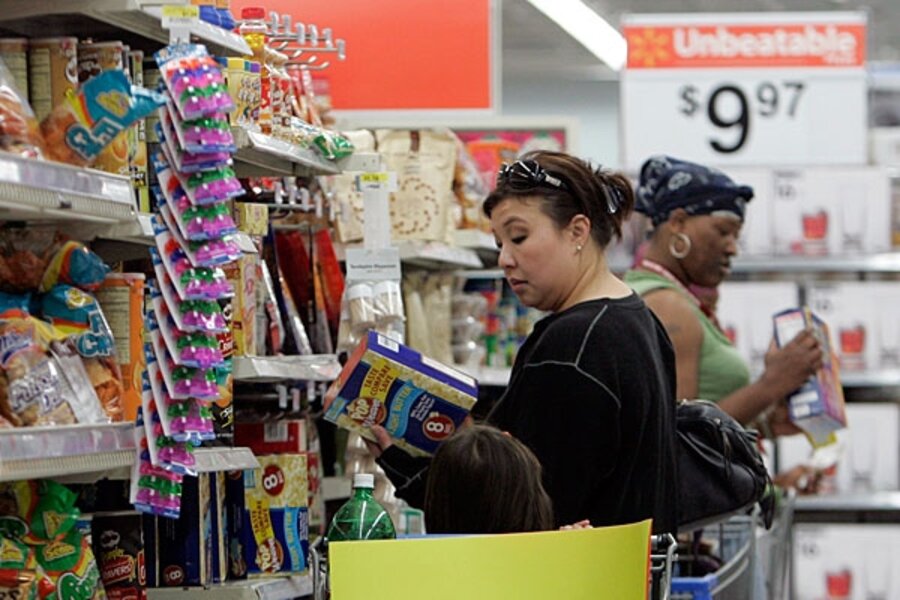Retail sales flag, as rising job losses make consumers wary
Loading...
The latest numbers on Americans’ shopping habits suggest that diminishing pessimism, by itself, isn’t allowing consumers to ramp up their spending.
Retail sales across the US fell in March by 1.1 percent compared with February’s pace, according to numbers released Tuesday by the Commerce Department and Census Bureau.
The forecast among most economists had called for a small rise in retail sales, following gains in January and February.
The good news remains this: Bleak consumer sentiment has eased a bit in recent weeks, and the pace of the decline in March was not as steep as those seen in the final months of 2008. In fact, for the first quarter of 2009, overall personal consumption could be in positive territory.
But with the tone of the world economy generally set by American consumers, the March number indicates that strong headwinds are still hindering recovery.
“The biggest spending declines may be behind us,” says Adam York, an economist at Wachovia Corp. in Charlotte, N.C. But weakness in the job market means consumers “are going to be very loath to make any kind of big-ticket purchases.”
The stock market opened lower Tuesday following the retail report.
The numbers arrived after several surveys had indicated a calmer mood among consumers.
An index of “economic optimism,” in the Investors Business Daily/TIPP poll, rose to 49 earlier this month – where a reading above 50 indicates a positive outlook for the economy.
A Gallup “consumer” mood survey has improved so that, while negative, the gauge is little-changed from a year ago.
“While the overall consumer mood improved dramatically in March, the best that can be said for overall daily consumer spending is that the rate of decline relative to a year ago has moderated substantially and may be stabilizing at a 15-month low,” Dennis Jacobe, Gallup’s chief economist, said in releasing the numbers on April 10.
One key to a consumer turnaround, economists say, will be stabilizing the job market, which has been shedding about 600,000 jobs per month lately. The rising consumer mood itself may help with that, if it boosts employers’ hopes that the downturn in sales may be nearing an end.
A second key is continuing to repair credit markets, so that financing is readily available for creditworthy business and consumers.
The retail numbers also are helping to fill in the picture of how the overall economy fared in the first quarter of the year.
Wachovia’s Mr. York expects US gross domestic product (GDP) to fall, but much less sharply than it did in the final quarter of 2008. And despite the March retail decline, he says overall consumer spending could be up modestly in the first quarter – whereas it had been a big negative for GDP at the end of last year.
The March decline is offset somewhat by rising retail sales in January and February. Moreover, some gains in service-sector sales are not captured by the retail report.
Still, when looked at on a year-over-year basis, retail spending has fallen sharply. Retail sales are down nearly 9 percent for the first quarter compared with the same quarter last year.
That represents a sharp pullback by consumers, which is rare except during deep recessions. In the 2001 recession, by contrast, retail sales held up well, setting new peaks while the slump was under way.
Consumers’ cutbacks in spending are centered in discretionary and big-ticket purchases, as opposed to necessities such as food. But the trend is broad-based. For the first quarter, year-over-year declines in retail sales included:
• A 25 percent drop at auto dealerships.
• A 13 percent decline in home furnishings.
• A 5 percent fall in appliances and electrics.
• A 4.5 percent drop for clothing.
• A 6 percent decrease at department stores.
Food and healthcare sales are up modestly, and a 33 percent decline in gasoline sales was driven by falling oil prices as well as reduced consumption.





